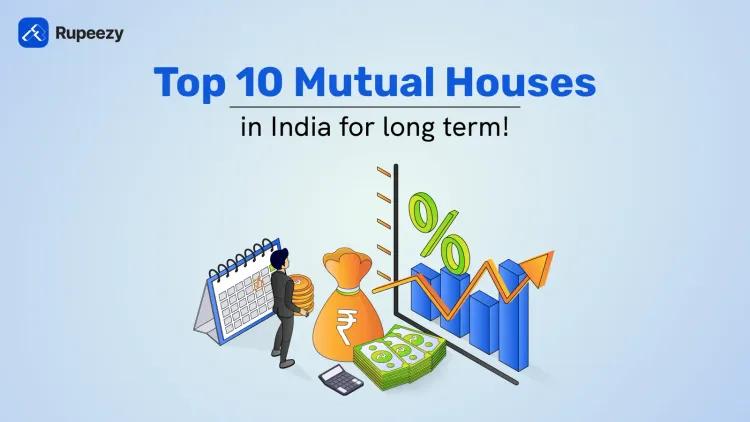Best Infrastructure Mutual Funds in India 2025


00:00 / 00:00
Infrastructure is the backbone of any economy, a strong infrastructure framework lays a solid foundation for other sectors to thrive. For example, good roads, bridges, highways, airports, dams, power plants, communication networks, and internet pathways all are essential for every other industry be it services, manufacturing, packaged goods, retail, food & beverages, IT, or advance technology to thrive.
Infrastructure stocks and mutual funds are in demand because it is an evergreen segment, especially in a growing economy where there is immense growth potential and also boosted by the government’s commitment. In this article, let us explore the best infrastructure mutual funds you can consider for investing.
Overview of Infrastructure Mutual Funds
Infrastructure mutual funds are sectoral or thematic funds investing in stocks of companies that are directly or indirectly involved in the infrastructure sector. These companies operate to build core and allied infrastructure in the country. For example, companies that work in building transportation networks e.g. water, rail, roadways, airport development, engineering, steel, cement, construction, electricity, telecom, urban infrastructure, etc.
Infrastructure mutual funds aim to take advantage of the growth potential in the infrastructure sector and invest in stocks that promise long-term growth and value creation.
Top 10 Infrastructure Mutual Funds in India
Here’s the top infrastructure mutual funds list you can choose from to build a stable and growth-oriented portfolio.
Fund Name | 5-Year Return CAGR | AUM (Rs. Cr) | Expense Ratio |
39.83% | 3991 | 0.66% | |
34.21% | 1660 | 0.7% | |
33.25% | 503 | 0.94% | |
33.19% | 6143 | 1.18% | |
32.92% | 1965 | 0.82% | |
32.56% | 7638 | 0.98% | |
32.24% | 887 | 0.96% | |
31.42% | 5500 | 0.89% | |
31.04% | 2904 | 0.91% | |
30.99% | 2447 | 0.6% |
Best Infrastructure Mutual Funds 2025
1. Quant Infrastructure Fund
The fund aims to generate capital appreciation & provide long-term growth opportunities by investing in a portfolio of infrastructure focused companies. 81% of the portfolio is invested in, of which 60% is concentrated in large caps.
Key sectors are Energy & Utilities, Industrials, Materials, Consumer and Consumer Staples. Top holdings of the scheme are HDFC Bank, Reliance Industries, Samvardhana Motherson, Tata Power, LIC, Adani Power, etc.
The fund carries high risk compared to the category average and is suitable for investors looking for aggressive growth with high risk.
Fund Managers: Ankit Pande, Vasav Sahgal
Launch Date: 31 Aug 2007
Fund AUM: Rs. 3991 Cr
5-Year CAGR: 39.83%
Since Inception CAGR: 21.65%
Expense Ratio: 0.6%
Fund Risk Vs Category Risk: 23.82% Vs 17.55%
2. Invesco India Infrastructure Fund
The scheme aims to generate wealth for investors over the long term by participation in infrastructure related investments. 96% of the portfolio is invested in equity with 48% allocation to mid and small caps. Top holdings of this fund are Power Grid Corporation, L&T, Jyoti CNC, NTPC, Suzlon Energy, Thermax etc.
The fund carries higher risk compared to the benchmark and a substantial allocation to mid and small caps. It is suitable for investors who can stay invested for the long term.
Fund Manager: Amit Nigam
Launch Date: 21 Nov 2007
Fund AUM: Rs. 1660 Cr
5-Year CAGR: 34.21%
Since Inception CAGR: 20.76%
Expense Ratio: 0.7%
Fund Risk Vs Category Risk: 20.66% Vs 17.55%
3. Bank of India Manufacturing & Infrastructure Fund
The fund has 96% corpus invested in equity with 45% invested in large caps and 55% allocated to mid and small caps. Top sectoral allocations are Power, Chemicals, Refineries, Engineering, Mining, and Metals. Fund top holdings are NTPC, Reliance Ind, L&T, Vedanta, Indus Towers, Hero Motocorp, Deepak Nitrite, Ashok Leyland, etc.
The fund’s risk is comparable to the average category risk and suitable for long term investors.
Fund Manager: Nitin Gosar
Launch Date: 1 Jan 2013
Fund AUM: Rs. 503 Cr
5-Year CAGR: 33.25%
Since Inception CAGR: 20.02%
Expense Ratio: 0.6%
Fund Risk Vs Category Risk: 19.08% Vs 17.55%
4. ICICI Prudential Infrastructure Fund
With 94% of the corpus invested in equity, the fund has a 55% allocation to large caps and 45% allocation to Mid and Small caps. Top sectoral allocations are Power, Banks, Cement, Engineering, Refinery, COnstruction etc. Top holdings in the fund are NTPC, L&T, TREPS, ICICI Bank, HDFC Bank, Kalpataru Project, Gujrat Gas etc.
Fund Manager: Lhab Dalwai
Launch Date: 31 Aug 2005
Fund AUM: Rs. 6143 Cr
5-Year CAGR: 33.19%
Since Inception CAGR: 19.22%
Expense Ratio: 1.18%
Fund Risk Vs Category Risk: 23.23% Vs 17.55%
5. Bandhan Infrastructure Fund
The fund has 95% corpus invested in equity with 44% corpus in large caps and 56% of the fund invested in mid and small caps. Fund’s major allocation is in Power, Cement, Pumps, Construction, Electric Equipment, Shipping etc. Top holdings in the fund are Kirloskar Brothers, Adani Ports, L&T, Ahluwalia Contr, PTC India Finance, Indus Towers etc.
Fund Manager: Vishal Biraia
Launch Date: 8 Mar 2011
Fund AUM: Rs. 1965 Cr
5-Year CAGR: 32.92%
Since Inception CAGR: 19.66%
Expense Ratio: 0.82%
Fund Risk Vs Category Risk: 24.69% Vs 17.55%
6. Nippon India Power & Infra Fund
Fund aims to generate capital appreciation through companies that are engaged in or allied to the power and infrastructure space in India.The fund has 98% investment in equity with 58% invested in large caps and 42% allocated to mid and small caps. Top holdings in the fund are L&T, Reliance Ind, NTPC, Kaynes Tech, Bharti Airtel, Bosch.
Fund Manager: Rahul Modi
Launch Date: 8 May 2004
Fund AUM: Rs. 7638 Cr
5-Year CAGR: 32.56%
Since Inception CAGR: 20.86%
Expense Ratio: 0.98%
Fund Risk Vs Category Risk: 22.71% Vs 17.55%
7. Canara Robeco Infrastructure Fund
The fund holds 95% investment in equities with 61% allocation in large caps and 38% in mid and small caps. Top holdings in the fund are L&T, NTPC, Reliance Ind, Power Grid Corpn, Power Finance Corpn.
Fund Managers: Vishal Mishra, Shridatta Bhandwaldar
Launch Date: 2 Dec 2005
Fund AUM: Rs. 887 Cr
5-Year CAGR: 32.24%
Since Inception CAGR: 19.06%
Expense Ratio: 0.96%
Fund Risk Vs Category Risk: 20.33% Vs 17.55%
8. DSP India T.I.G.E.R. Fund
The fund has 92% corpus invested in equities with 47% allocation to large caps and 53% to mid and small caps. Top holdings in the fund are NTPC, L&T, Siemens, Kirloskar Oil, Bharti Airtel.
Fund Manager: Charanjit Singh
Launch Date: 11 June 2004
Fund AUM: Rs. 5500 Cr
5-Year CAGR: 31.42%
Since Inception CAGR: 20.05%
Expense Ratio: 0.89%
Fund Risk Vs Category Risk: 22.54% Vs 17.55%
9. Franklin Build India Fund
This fund is suitable for investors seeking capital appreciation through exposure mainly to the infrastructure theme.The fund’s investment is oriented towards structural themes and not cyclical themes through companies across the market capitalization range.
The top sector allocation is in Power, Engineering, Banks, Construction, Oil Drilling and tp holdings are L&T, NTPC, ONGC, ICICI Bank, Reliance Industries,Power Grid Corporation, Kirloskar Pneumatic.
Fund Managers: Ajay Agral, Kiran Sebastian, Sandeep Manam
Launch Date: 4 Sept 2009
Fund AUM: Rs. 2904 Cr
5-Year CAGR: 31.04%
Since Inception CAGR: 21.68%
Expense Ratio: 0.91%
Fund Risk Vs Category Risk: 22.72% Vs 17.55%
10. Kotak Infrastructure & Economic Reform Fund
The fund aims to generate returns by investing in companies involved in the economic development of India as a result of potential investments in infrastructure and unfolding economic reforms.
The fund has 60% allocation to mid and small caps and 40% to large caps. The top holdings are UltraTech Cement, Bharti Airtel, L&T, Solar Industries, Kalpataru Projects.
Fund Manager: Harish Krishnan
Launch Date: 25 Feb 2008
Fund AUM: Rs. 2447 Cr
5-Year CAGR: 30.99%
Since Inception CAGR: 19.81%
Expense Ratio: 0.6%
Fund Risk Vs Category Risk: 21.25% Vs 17.55%
Why Invest in Infrastructure Mutual Funds?
Infrastructure development is key to achieve India’s future vision to turn into $ 40 trillion economy by 2047 and join the club of developed economies globally.
A focus on infrastructure development propels a wider upliftment of economy as well. Increasing capital investment in infrastructure projects creates demand for manpower, employment, high skilled resources, power, roads, connectivity, better logistical solutions, telecommunications, housing and resources.
This demand has a follow on impact on all other sectors such as personal consumption and retail, food and agri, healthcare and education and demand for better quality of life.
Infra development also attracts Foreign Direct Investment and bolsters the confidence of overseas investors as well in the economy. According to a study by RBI, every rupee spent on infrastructure adds 2.5 to 3.5 rupee gain in GDP.
Government push for infrastructure is evident from this year’s budget outlay increase for infrastructure by 11% to Rs 11.11 lakh crore, making it 3.4% of GDP.
For example, government has outlined an ambitious target to develop a 2 lakh-km national highway network by 2025 and expand airports to 220. Additionally, there are plans to make 23 waterways operational by 2030 and develop 35 Multi-Modal Logistics Parks.
Factors to Consider When Choosing Best Infrastructure Mutual Funds
Factors you must keep in mind before choosing an infrastructure fund are:
Past Performance: Look at the past performance of the fund compared to other funds in the category. Consider the category benchmark return and fund’s performance. Look for consistent returns over not just 6 months or 1 year but longer time horizons.
Risk Parameters: Returns are always tied to risk undertaken by the fund manager to achieve those returns. There are risk parameters you can look at e.g. Sharpe Ratio, Beta, Alpha and risk ratings that give a fair idea about a fund's risk. Consider your risk appetite while selecting a fund.
Size of the Fund: Size of the fund shows how long the fund has been in existence, its popularity and investor’s faith in the fund. An optimally sized fund in its category ensures you can cash out easily and the fund manager has the required liquidity to design the portfolio.
Fund Manager’s Track Record: Fund manager’s reputation, past track record and investment style is crucial in a fund’s overall performance. You must check the fund manager’s credentials and investment objective before investing.
Expense Ratio: Every fund charges an expense cost to account for administrative expenses, fund management fees, operational expenses etc calculated as fund expense ratio. The expense ratio is deducted as a percentage of overall AUM. Lower the expense ratio of a fund, lower the cost and better it is for the investors.
AMC Track Record: There are various AMCs in the market that offer schemes in different categories. Before selecting a scheme, assess the reputation, size and legacy of the fund house. A stable, large reputed AMC would ensure better compliance and risk management.
Investment Goals: Do consider you investment goals, risk appetite and time horizon before investing in equity or sectoral funds. Equity investments are suitable for the long term as they can be prone to short term volatility and market headwinds.
Benefits of Investing in Top Infrastructure Mutual Funds
Stability: Infrastructure is a long-term sector involving large capital intensive projects with private public partnership. With low competition and high barriers to entry, these companies have the potential to generate predictable, stable returns and cash flows aided by government support, subsidies etc.
Core Sector: Infrastructure is a core segment of the economy that drives employment, attracts overseas investment, drives growth and consumer demand. It is a high-growth sector that can promise for sustained and long term growth.
Diversified Theme: Unlike other sectoral funds, infrastructure theme involves a variety of segments and is not limited to any one type of industry. Hence, infrastructure sector funds offer a wide range of diversified companies to invest in and mitigate sectoral risk.
Risks Associated with Investing in Top Infrastructure Mutual Funds in India
Cyclical Sector: Growth of the infrastructure sector is dependent on the state of the economy and global factors. In case the economy underperforms, infrastructure segment may be impacted negatively as witnessed during Covid pandemic.
Sectoral Risk: Compared to diversified equity funds that are not concentrated to any specific setor, Infrastructure funds are restricted to infra themed stocks. These funds are vulneable to any negative developments in the Infra segment.
Sub-Sector Focus: Infrastructure sector funds may have a higher concentration towards one specific sub-segment among others, thus increasing the risk.
Tax Implications in Infrastructure Mutual Funds
Infrastructure sector funds are basically equity funds and their tax treatment is the same as that for equity themed mutual funds. The profits from equity mutual funds are taxed according to unit holding period.
Short-Term Capital Gains (STCG): If the units of the fund are sold within 12 months of purchase, the gains are taxed at 20%.
Long-Term Capital Gains (LTCG): If the units of the fund are sold after 12 montha of purchase, the gains exceeding Rs 1.25 lakhs in a financial year are taxed at 12.5%.
Dividend Income: If the investor receives dividend from the fund, the dividend income is added to investor’s overall income and taxed as per tax slabs.
Conclusion
Infrastructure funds are sectoral equity funds that invest in businesses involved in infrastructure segment e.g. transport, power, construction, communication etc. Infrastructure funds are attractive investment avenue to participate in country’s economic growth and development directly related to infrastructure expansion. These funds also carry high risk due to sector specific downturn or challenges.
You can allocate a fraction of your portfolio to infrastructure funds for a 5+ years time horizon and long term wealth creation. Invest in high performing infrastructure funds with Rupeezy.
On the app, go to ‘Explore’ button, select ‘Sector Funds’ and view the top performers with risk return graph. Select the fund of your choice, choose from Lump sum or SIP, fill in the amount and make payment with UPI or Net Banking. Download the app now.
Check Out These Related Articles |
The content on this blog is for educational purposes only and should not be considered investment advice. While we strive for accuracy, some information may contain errors or delays in updates.
Mentions of stocks or investment products are solely for informational purposes and do not constitute recommendations. Investors should conduct their own research before making any decisions.
Investing in financial markets are subject to market risks, and past performance does not guarantee future results. It is advisable to consult a qualified financial professional, review official documents, and verify information independently before making investment decisions.

All Category









